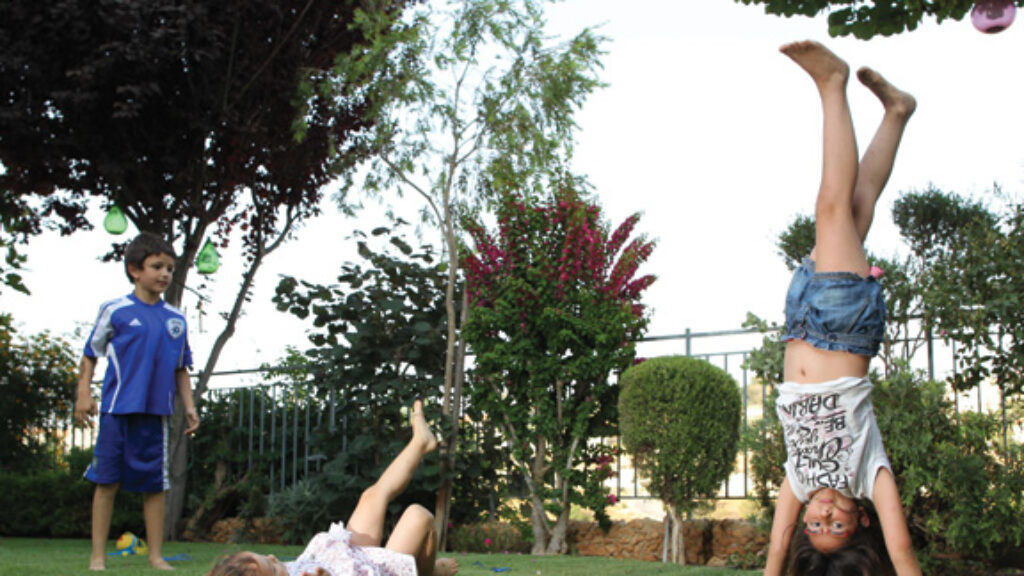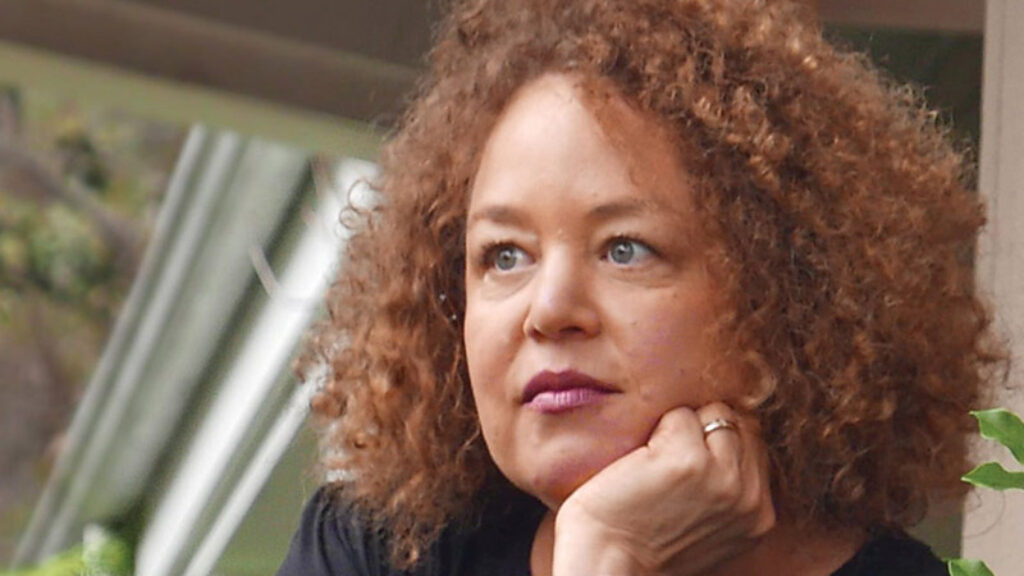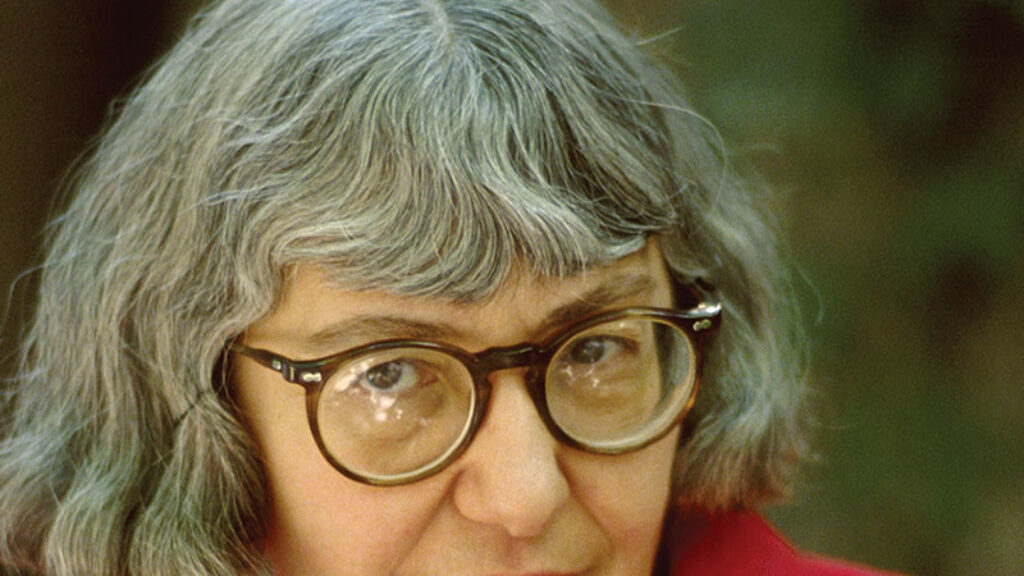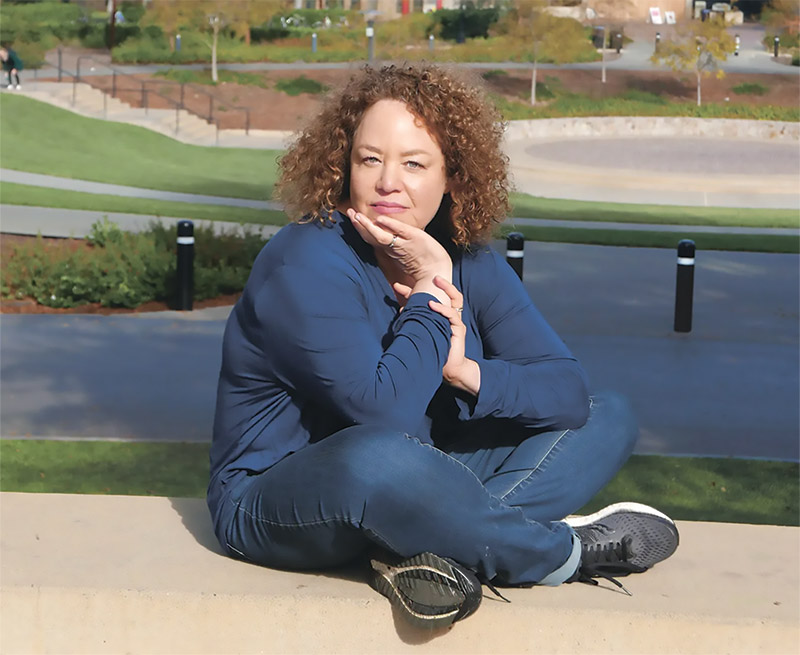Od Tireh, Od Tireh . . .
The first time I laughed out loud was on page eleven, when Ilana Goldstein, the titular Hebrew teacher of Maya Arad’s new collection, meets the newly minted professor of Hebrew and Jewish literature at her midwestern university. Yoad Bergman-Harari trained at Berkeley and has just completed a postdoc at Columbia. He had “been born Yoad Harari, but during his university studies he’d added on his father’s original name, Bergman.” In her innocence, Ilana asks why. “‘To negate the negation of the diaspora,’ he replied, as though it were the most obvious thing in the world.”
With this exchange we are off and running. Opposing political views, intergenerational conflict, the complexities of expat life—they’re all here in three novellas translated from Hebrew by Jessica Cohen. Arad’s stories neither negate the diaspora nor negate its negation, but they say a great deal about the diasporic experience of Israeli academics and entrepreneurs who have left one promised land for another.
Each of Arad’s novellas has a satiric edge, but the first is the sharpest and funniest. Ilana asks Yoad to encourage his literature students to take her Hebrew classes and then listens in amazement as he asks, “But what do I have to do with all this?” The new Hebrew literature professor is teaching a class on Heidegger. He explains to Ilana:
“The idea, basically, is to examine the question of what Jewish literature is from a new perspective. To challenge that inquiry. To problematize it. What is Jewish literature? Is it Sholem Aleichem? Agnon? Is it Saul Bellow? Today there is fairly broad agreement that Jewish literature is not only what is written in Hebrew or Yiddish, not even only what is written by Jews. Dan Miron has talked about the Judaization of European literature in the twentieth century. So basically, my idea is that the literary expanse is full of broken vessels of Jewish contexts, which find their place in twentieth-century literature and thought throughout Europe, and it is precisely Heidegger”—he accentuates the name—“who manifests that notion so plainly, and I stand behind that claim, problematic as it may be.”
Arad is pitch perfect as she captures Yoad’s arrogance, his interest in problematizing literature rather than reading or teaching it, and his determination to distance himself from Jewish literature and culture in particular. Of course, the more unlikeable Yoad seems, the more attractive he becomes to Ilana’s chair. How he will keep Yoad here is his main concern.
You don’t need experience with academic politics to appreciate the dynamics at play. The desire to please a bold pedigreed male newcomer. The cavalier treatment of a woman who has been underpaid and overworked for years. The city mouse–country mouse dynamic in which an urbane outsider turns up his nose at the local rustics. Academics will also recognize the beleaguered adjunct language instructor, the craven department chair, and the literary theorist who says quite seriously, “Literature for me is the material, not the instrument. I look at what I need but the only thing I read seriously is the instruments: Mostly philosophy. A little psychoanalysis. Here and there some sociology, anthropology. You know, just enough.”
We enjoy Arad’s satire, but it’s painful to watch Yoad run roughshod over Ilana. As a citizen of the world, Yoad sides with the oppressed, abhorring Israel’s 2010s “siege” of Gaza. However, as a professor, he has no qualms about criticizing and stymying an adjunct. When it comes to power relations, a dark undercurrent deepens Ilana’s story.
A poignant, almost elegiac feeling imbues each of Arad’s novellas. Aggravated as she is when Yoad scoffs at her teaching choices and politics, Ilana sees her supercilious colleague and her dwindling enrollments as a sign of something bigger. “It wasn’t a very good time for Hebrew,” she thinks as she tries to psych herself up for the new semester. Ilana began teaching in America in 1971 when “the Six-Day War was still fresh in people’s minds”:
Her classes at the synagogue were packed. Parents wanted their children to be able to chat in Hebrew, not just recite the prayers. There was demand for an adult class too. . . . She remembers singing to them, accompanying herself on the guitar: Od tireh, od tireh.
You will see, you will see, how good it will be, as the song lyrics go. But if the words were poignant when Naomi Shemer wrote them, they sound ominous now. Valiantly, Ilana carries on with her Israel independence celebration in the face of activists with a Palestine Liberation Organization flag and signs declaring “Remember Nakba Day” and “Support Palestine.” In protests that now seem almost quaint, campus activists craft a BDS petition signed by faculty, including Yoad, and published in the campus paper.
When Ilana was young, she felt she could convey what was special about her country and culture. Now, forlorn and a touch self-dramatizing (she has an ego too), Ilana resolves to write her memoirs. “She’ll write about the good years. To remind people of them. So they aren’t forgotten. People should know that there was once a Hebrew program here.”
A sad disconnect colors Arad’s second novella as well. “A Visit (Scenes)” dramatizes the difficult journey of Miriam from Israel to the Bay Area to visit her only son, Yoram, his wife, Maya, and their toddler, Yonatan. Yoram has not kept close ties with his mother, and Miriam does not know how long he has been living in his house or even the name of his current company. As for Maya, she turns out to be a stressed and distant daughter-in-law who experiences Miriam’s multiweek stay as an imposition. Complaining about her mother-in-law to a friend, she says, “I get up in the morning, she’s there. I go outside with my coffee, she’s watching me. I want to do some work on my laptop, she’s there asking questions.”
In brief, deftly sketched scenes, Arad develops the conflicting desires and expectations of Miriam, Yoram, and Maya. Miriam wants desperately for her grandson to recognize her. Presenting Yonatan with presents, she says, “Grandma brought this for you. Say Grandma, Yonatan.” Time with the little boy is what Miriam craves, but he is at daycare all day, and she is left waiting for him in her son’s Palo Alto home. Yoram, who works in tech, is contending with work pressure and disappointment. He has been stretched to the limit financially and emotionally, and now his mother shows up. “Didn’t you use to work somewhere else?” she asks.
Like Ilana, the Hebrew teacher, Miriam feels an overwhelming nostalgia for what was and a wistfulness for what might have been. She tells Yoram, “When you were a little tot like Yonatan. Maybe a bit older. Three or four. I said you could live with us until you grew up and then you’d move into your own home, and you cried. Oh, how you cried! You were inconsolable. You said you wanted to live with us forever. Don’t you remember?” But he doesn’t remember or simply won’t, this curt, troubled, middle-aged son who has moved halfway around the world. Gradually one understands more of what has made Yoram and Maya so unhappy and inhospitable, but it is Miriam who dominates the scenes and wins the reader’s sympathy. Her yearning and disappointment build to a powerful and moving ending.
Opposing values, missed signals, social media and its discontents—these are the subjects of Arad’s third novella, “Make New Friends.” Once again, a wistful middle-aged mother serves as the protagonist. Efrat is contending with her troubled, awkward twelve-year-old daughter. Resisting family hikes, Libby has grown sedentary, chubby, and obsessed with girls who snub her at every turn. Efrat’s husband, Benny, insists that Libby needs a phone, but Efrat resists, afraid that social media will consume and torment Libby.
We feel for Efrat as she grapples with conflicting emotions: sadness for Libby; annoyance at her behavior; concern that she is out of shape; fury at the girls who exclude her and then post pictures of their get-togethers; and fear that left alone, Libby might hurt herself. Arad explores all of this with acute attention to detail. The twenty-eight comments her friend gets on a post, the kitchen after Libby makes pancakes: “Batter smeared on the counter, an open bottle of oil, an unwashed pan. The air smells like cooking oil and vanilla.” However, the most interesting details are those that dramatize Efrat and Benny’s distinctive Israeli American lives. They are raising Libby and her brother with Hebrew at home. How much do the children retain? How much do they understand? “Hi Ima,” Libby texts her mother after a big fight, sending a photo of herself in a new coat. “‘Great honey. Enjoy it,’ [Efrat] answers in Hebrew. ‘Thanks, Ima,’ Libby writes back in English. At least she understood the Hebrew correctly.”
This is almost a throwaway moment, but the cultural dissonance adds texture to Efrat’s story. The soul-sucking effects of social media are well documented, the dangers of bullying, the helpless fears of parents as their teens slip away—all these are real but also familiar and much-discussed phenomena. It is the context of immigrant experience that makes this story specific and compelling. When Efrat tries to comfort Libby with stories of her youth, her references are to Israel’s cityscapes and calendar. “When I was in eighth grade, on Chanukah, my mom let me go to Tel Aviv to spend my Chanukah money at Dizengoff Mall, for the first time ever. But she said I had to bring a friend.”
The dilemmas in The Hebrew Teacher are archetypal. The old and young oppose each other. Husbands and wives disagree. Children stumble and break away. These are powerful conflicts, but the particulars of language and culture and place set Arad’s work apart. After all, she is not writing about the plight of adjunct lecturers as a group but about a Hebrew instructor with specific references and memories. She is not writing about just any disaffected teenager but a teen whose parents came from Israel to America. Just as Libby navigates middle school, her parents are negotiating child-rearing in the Bay Area.
The most compelling passages in The Hebrew Teacher touch on memories of Israel. Ilana, the adjunct Hebrew instructor, was born in the year of Israel’s independence. After spending “almost forty-five years” in America, she takes a memoir-writing class because she wants to capture and preserve the Israel of her youth:
If she doesn’t write it, who will remember the house she grew up in? Two rooms with a hallway, balcony, and red roof, like in a child’s drawing. The thick steam in the tiny bathroom, where they heated water on a wood-burning stove. The intoxicating smell in the kitchen when her mother kneaded dough for challah and cinnamon and chocolate babkas on Friday afternoons. The brown sofa that was opened up every night to serve as a double bed in the living room, leaving no space to move.
How poor her apartment sounds, and yet how rich.
When Miriam eats sushi with her son and daughter-in-law in Palo Alto, they warn her to be careful with the wasabi:
She nods. “I know. They opened a sushi place like this near us. In the old shopping center.
“Seriously?” Yoram looks amused.
“Yes, next to the nut shop. Where Baruch’s snack bar used to be.”
This quick exchange captures the cosmopolitan country Israel has become. The sushi place taking over from the snack bar run by Baruch, whose old-fashioned name means blessing. The townhouses and malls, Starbucks and playgrounds in America pale in comparison—not because they are pale, but because they do not hold such powerful associations for Arad’s characters. In a fast-moving book, the reader wants to linger in these moments.
Maya Arad has been described in Haaretz as the finest living author writing in Hebrew. She is the author of more than a dozen books, but this is her first work of fiction to appear in English. More please.
Comments
You must log in to comment Log In
Suggested Reading
Lost in America
Two new books, different in tone but matched in caliber, show Israelis making their way as best they can in America and in life.

Reader, I Adopted Him
Maya Arad's latest work is minor literature in the sense that Jane Austen—a model for Arad—is minor because she focuses on human character rather than on the Napoleonic wars and the religious crisis of the Enlightenment.

As American as Augie March
Once again, Maya Arad marries the metafictional play of Nabokov with the moral warmth of Jane Austen.

Cynthia Ozick’s Art and Ardor
Reading is a blessing and a curse in Ozick’s world, a gateway to heightened emotion and new experience and also a maze of cruel tricks and dead ends. Allegra Goodman reviews her latest novel.

David Lobron
Thank you for this excellent review. I loved these stories. The first novella, in particular, reminded me of the novel "Pnin", by Nabokov. Nabokov's titular main character is also an overworked, under-appreciated emigre adjunct language instructor. Like Ilana, Pnin has a colleague in French Literature who prefers prestige to knowledge: Professor Blorenge "disliked literature, and had no French". There is also a chair of the German Department whose aesthetic objection to Buchenwald's location sound a bit like Yoad Bergman-Harari's proudly "problematic" embrace of Heidegger:
"'...in the beautifully wooded Grosser Ettersburg, as the region is resoundingly called. It is an hour's stroll from Weimar, where walked Goethe, Herder, Friedrich Schiller, Christoph Martin Wieland, the inimitable
Kotzebue and others. 'Aber warum – but why –' Dr. Hagen, the gentlest of souls alive, would wail, 'why had one to put that horrid camp so near!' for indeed, it was near – only five miles from the cultural heart of Germany – 'that nation of universities'".
Much like Ilana in Arad's story, Pnin ends up marginalized by academic colleagues who totally lack his decency. Both portrayals are absolutely brilliant.
JJ Gross
I just finished reading The Hebrew Teacher. It is brilliantly written and utterly depressing. It provide a razor keen picture of the life of 'yordim' - educated Israelis who have relocated to the American diaspora. Like a palm tree in the Arctic, like a fish on land, like an aborigine in Heidelberg, it describes the hopelessy alienated, hollowed out, family0sundered lives for former Israelis who never become American yet are no longer Israeli; who gives their totally disconnected,rootless children Hebrew names hoping against hope that these will inspire them to remain connected to a culture and society with which they have no connective tissue. Like the protagonist in The Hebrew Teacher - who no longer has her old language and has not quite acquired the new one. Her vocabulary is dated, her cultural associations with Israel are mildewed anachronisms. She sings songs that have been superceeded by a half century of Israeli cultural development. She seals her irrelevance by retiring to Miami where she will be more comfortable, no doubt among the mass of other former Israelis who gather on Yom Haatzamut to sing songs from their army days while their children and grandchildren are, in many cases, camping out on college quads demonstrating against Israel. One is left wondering how Maya Arad, with her keen eye, and brilliant Hebrew pen makes peace with living in northern California for half her adult life, and how she managed - if indeed she managed - to raise her children to be any less vapid and rootless than those she so brilliantly portrays.